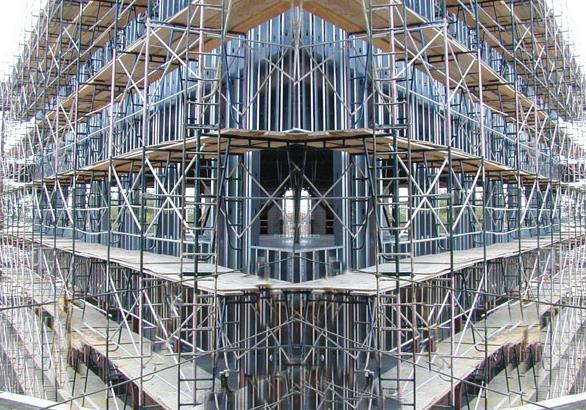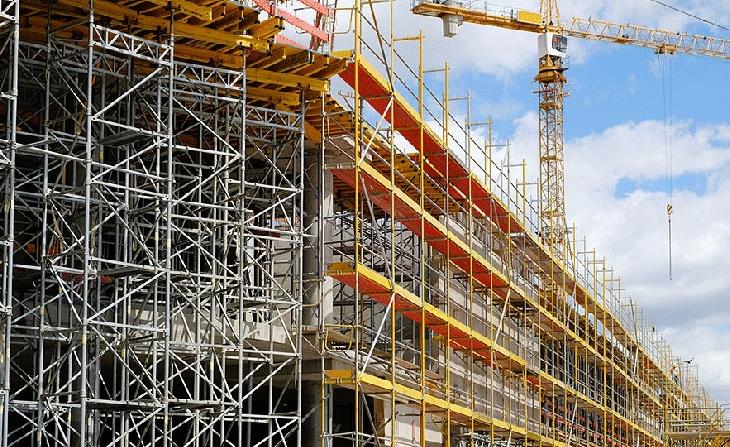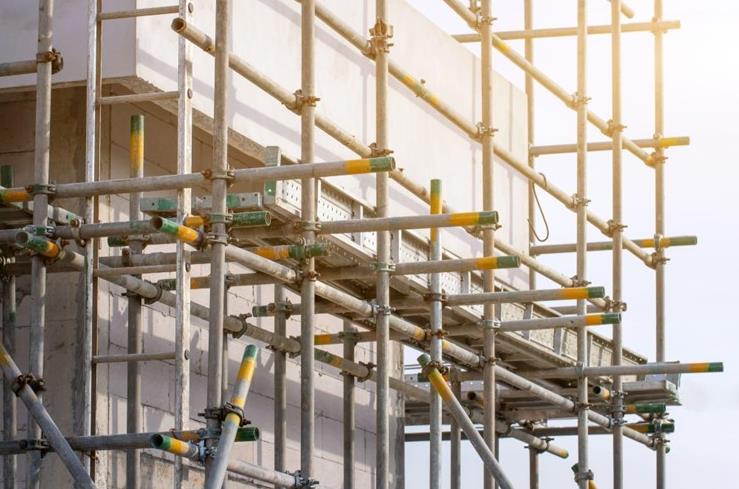Content Menu
● Understanding Modular Scaffolding Systems
● Key Benefits of Modular Scaffolding Systems
● Applications of Modular Scaffolding Systems
● Visual Representation
● Detailed Considerations in Using Modular Scaffolding Systems
>> 1. Training Requirements
>> 2. Compliance with Regulations
>> 3. Customization Options
>> 4. Technological Integration
>> 5. Environmental Impact Considerations
● Conclusion
● FAQ
>> 1. What is a modular scaffolding system?
>> 2. What are the main advantages of using modular scaffolding?
>> 3. Where is modular scaffolding typically used?
>> 4. How does modular scaffolding improve safety on construction sites?
>> 5. Is it cost-effective to use modular scaffolding?
● Citations:
In the ever-evolving construction industry, the demand for efficient, safe, and adaptable scaffolding solutions has led to the widespread adoption of modular scaffolding systems. These systems are designed to meet the unique challenges posed by complex projects, offering a range of benefits that traditional scaffolding cannot match. This article explores the features, advantages, and applications of modular scaffolding systems, highlighting why they are an ideal choice for modern construction.

Understanding Modular Scaffolding Systems
A modular scaffolding system is composed of standardized components, such as frames, braces, and connectors, which can be quickly assembled and disassembled. This system utilizes vertical, horizontal, and diagonal posts arranged in a predefined manner to create a stable platform for workers at various heights.
- Components of Modular Scaffolding:
- Standards: Vertical posts that support the structure.
- Ledgers: Horizontal members connecting standards for stability.
- Transoms: Additional horizontal supports for the working platform.
- Decking: Platforms where workers stand.
- Base Plates: Components that distribute weight and stabilize the structure.
- Diagonal Braces: Enhance stability by connecting vertical and horizontal members.
- Guardrails and Toeboards: Safety features to prevent falls.
The modular design allows these components to be easily configured into various shapes and sizes, making them suitable for a wide range of applications.
Key Benefits of Modular Scaffolding Systems
1. Enhanced Safety Standards
- Modular scaffolding systems are engineered to meet stringent safety requirements. Features such as guardrails, toe boards, and slip-resistant platforms significantly reduce the risk of accidents. The robust design ensures stability, providing workers with a secure environment at height.
2. Quick and Easy Assembly
- One of the standout features of modular scaffolding is its rapid assembly and disassembly capabilities. Unlike traditional scaffolding that often requires complex setups with multiple tools, modular systems can be erected quickly using standardized components. This efficiency saves time and reduces labor costs on projects.
3. Flexibility and Versatility
- Modular scaffolding can be adapted to fit various project requirements. Whether constructing high-rise buildings or performing maintenance on bridges, these systems can be customized in height, shape, and configuration. This adaptability allows construction teams to navigate challenging architectural designs without compromising safety or efficiency.
4. Cost-Effectiveness
- While the initial investment in modular scaffolding may be higher than traditional options, the long-term savings are substantial. The durability of materials reduces the need for frequent repairs or replacements. Additionally, the time saved during assembly translates into lower labor costs.
5. Improved Accessibility
- Modular scaffolding provides easy access to all areas of a structure. Adjustable components allow workers to navigate tight spaces or uneven surfaces effectively. This accessibility ensures that tasks can be performed efficiently without compromising safety.
6. Durability and Strength
- Constructed from high-quality materials like galvanised steel or aluminum, modular scaffolds are built to withstand heavy loads and harsh weather conditions. Their structural integrity ensures they can support both workers and equipment safely.
7. Reduced Storage and Transportation Costs
- Traditional scaffolding can be bulky and challenging to transport. In contrast, modular components are compact and lightweight, making them easier to store and move between job sites. This efficiency minimizes logistical challenges for contractors.
8. Eco-Friendly Design
- Many modular scaffolding systems are made from recyclable materials, aligning with sustainable construction practices. Their reusability across multiple projects reduces waste and environmental impact.
9. Increased Efficiency
- The streamlined operations afforded by modular scaffolding contribute significantly to overall project efficiency. Quick assembly allows workers to focus on their tasks without delays caused by complex scaffold setups.
10. Ease of Maintenance
- Modular scaffolds require minimal maintenance due to their durable construction. Regular inspections are straightforward, ensuring that any necessary repairs can be conducted swiftly without significant downtime.

Applications of Modular Scaffolding Systems
Modular scaffolding systems are versatile and find applications across various sectors:
- Construction Projects: Ideal for residential buildings, commercial structures, and industrial sites where safety and accessibility are paramount.
- Infrastructure Development: Used extensively in bridge construction, tunnel work, and other large-scale infrastructure projects where adaptability is crucial.
- Shipbuilding: Provides safe access for maintenance tasks such as welding or painting in confined spaces.
- Power Plants: Offers versatile solutions for equipment maintenance and inspections in critical areas.
Visual Representation
To better understand the benefits of modular scaffolding systems, consider the following images:
1. Image showcasing a modular scaffold structure on a high-rise building site.
2. A video demonstrating the quick assembly process of a modular scaffold system in action.
3. Infographic detailing the key components of a modular scaffold system.
Detailed Considerations in Using Modular Scaffolding Systems
While understanding the benefits is crucial, it's also essential to consider specific aspects related to using modular scaffolding systems effectively:
1. Training Requirements
Even though modular scaffolds are designed for ease of use, proper training is essential for workers who will assemble or disassemble these structures. Training programs should cover safety protocols, assembly techniques, load capacities, and emergency procedures.
2. Compliance with Regulations
Modular scaffolding must comply with local regulations and standards regarding construction safety (such as OSHA standards in the United States). Ensuring compliance not only protects workers but also mitigates liability risks for contractors.
3. Customization Options
Modular systems offer extensive customization options to suit specific project needs:
- Custom heights can be achieved by adding or removing components.
- Special configurations can accommodate unusual architectural designs or site constraints.
- Additional safety features can be integrated based on project requirements.
4. Technological Integration
Modern advancements allow for integrating technology into modular scaffolding systems:
- Sensors can monitor structural integrity in real-time.
- Mobile applications can assist in planning scaffold layouts based on project specifications.
- Drones may be used for inspections after assembly to ensure compliance with safety standards.
5. Environmental Impact Considerations
As sustainability becomes increasingly important in construction:
- Contractors should consider sourcing materials from suppliers focused on eco-friendly practices.
- Implementing recycling programs for damaged or outdated components can further reduce environmental impact.
Conclusion
In conclusion, modular scaffolding systems represent a significant advancement in construction technology that offers numerous benefits tailored to modern project needs. From enhanced safety standards to quick assembly times and cost savings through reusability, these systems provide practical solutions for contractors managing complex projects across various industries.
By adopting modular scaffolding systems, construction teams can improve site safety while boosting efficiency and reducing costs—all while minimizing their environmental footprint. As the construction industry continues to embrace innovative practices, modular scaffolding is poised to remain a key player in shaping the future of building and infrastructure development.

FAQ
1. What is a modular scaffolding system?
A modular scaffolding system is composed of standardized components designed for quick assembly or disassembly without complex tools or extensive training.
2. What are the main advantages of using modular scaffolding?
The primary advantages include enhanced safety standards, quick assembly times, flexibility in design configurations, long-term cost-effectiveness due to durability and reusability, improved accessibility to work areas, reduced storage needs, eco-friendly options, increased efficiency during projects, and ease of maintenance.
3. Where is modular scaffolding typically used?
Modular scaffolding is commonly used in construction sites (residential or commercial), infrastructure projects (like bridges), shipbuilding yards for maintenance tasks, power plants for equipment inspections, as well as temporary structures for events or concerts.
4. How does modular scaffolding improve safety on construction sites?
Modular scaffold systems incorporate features like guardrails and slip-resistant platforms while ensuring stable support structures that significantly reduce accident risks during work at heights.
5. Is it cost-effective to use modular scaffolding?
While initial costs may be higher than traditional options due to advanced materials used in their manufacture; however long-term savings from reduced labor costs during assembly/disassembly along with lower maintenance needs make it a cost-effective solution overall.
Citations:
[1] https://www.scaffolding.my/post/benefits-using-modular-scaffolding
[2] https://scaffoldtype.com/modular-system-scaffolding/
[3] https://yourneighbourhood.com.au/benefits-of-modular-scaffolding-systems-for-projects/
[4] https://techbullion.com/10-benefits-of-modular-scaffolding-systems-for-modern-construction/
[5] https://www.scafom-rux.com/en/scaffolding-blog/beginner-s-guide-to-scaffolding-types-the-ringlock-scaffold
[6] https://jumplyscaffolding.com/modular-scaffold/
[7] https://scal-academy.com.sg/courses/course_detail/System-and-Modular-Scaffolds
[8] https://www.aeganz.com/commercial-scaffolding-system-types-exploring-capabilities-and-applications-for-different-industries/
[9] https://www.assl.co.nz/post/mobilising-efficiency-the-advantages-of-using-mobile-scaffolds-in-construction
[10] https://www.actionscaffold.com/post/frame-and-brace-scaffolding-benefits
[11] https://www.crewscaff.com.au/what-is-a-modular-scaffold-system
[12] https://www.scafom-rux.com/en/scaffolding-blog/three-reasons-to-use-modular-scaffolds-for-industrial-applications






















